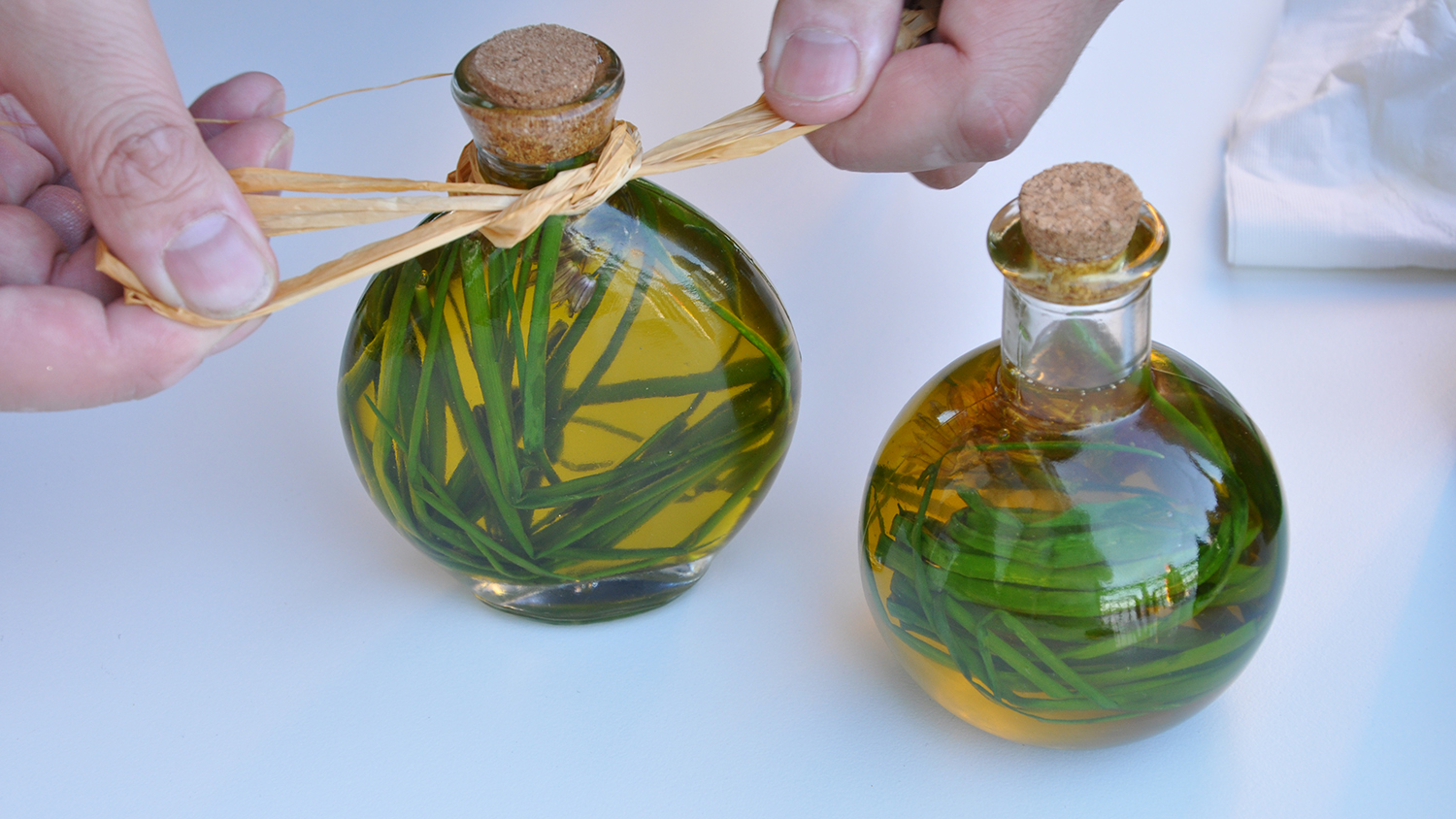How to Infuse Oils, Vinegars, Liquor or Honey (Without Making People Barf)

[Editor’s Note: This post is part of a series designed to help people avoid foodborne illness during the holidays. You can find other posts in the series – on everything from eggnog to roasting a turkey – here.]
Hand-crafted gifts of infused oils, honeys, vinegars and liquors seem to be increasingly popular. But many of these artisanal concoctions could pose significant health risks. However, there are things home cooks can do to make these products much safer.
Here’s why this is important: foods that aren’t processed correctly or stored at the proper temperature can become a breeding ground for bacteria. The same is true for foods that are not sufficiently acidic. For example, garlic cloves in oil look lovely. But they have also been linked to botulism poisoning – which is not lovely.
We’re not saying that home cooks shouldn’t make infused food products for the holidays. We just want folks to take the proper precautions. With that in mind, we talked to food safety experts Natalie Seymour and Candice Christian about what home cooks can do to drastically reduce the risk of foodborne illness.
If you want to show loved ones you care, but don’t want to make them violently ill, pay attention to these basic guidelines.
Sterilize Your Containers
No matter what infused product you are making, you need to wash and boil your bottles or jars for 10 minutes in order to eliminate risk from residual pathogens on the container.
Use Quality Ingredients
Use fruits, vegetables, or other ingredients that aren’t bruised or scraped. This makes them less likely to harbor problematic bacteria. And don’t forget to wash them!
Refrigerate or Freeze
We recommend storing the finished product in the refrigerator or freezer. This helps preserve the product’s quality – and makes it less likely that any bacteria in the product will reproduce.
For Infused Oil or Honey
Oils create an environment with no oxygen, which is an ideal place for Clostridium botulinum bacteria to grow and produce botulism toxin (which is bad). Since produce items like garlic and herbs can harbor C. botulinum, it’s a good idea to destroy any bacteria on those items before adding it to oil. This can be done by soaking the products in a citric acid solution to reduce the pH and destroy bacteria that might be present.
Specifically, the citric acid solution needs to be strong enough to bring the pH level of the garlic, herbs or other ingredients down to 4.2 or less within 24 hours. This paper outlines how you can do that. (This technique is also how manufacturers process infused oils that you can buy off the shelf.)
Skipping the acidification step is risky, so refrigeration is important to prevent the growth of bacteria. Based on the best available science, we recommend that, if you’re not using an acid solution to treat the ingredients in infused oil, the final product should be refrigerated – and thrown away within four days of being made. The only way around this is to freeze the oil until you’re ready to use it.
The oil or honey should also be heated to 180 degrees Fahrenheit before adding it to the other ingredients. If you want step-by-step safety instructions, you can find more information here.
If you make infused oils with properly acidified vegetables or herbs, they can be kept safely at room temperature, though you may want to refrigerate them in order to preserve their quality.
For Infused Vinegar
Heat the vinegar to 190 degrees Fahrenheit before adding it to the other ingredients, and be sure to fill the container to within 0.25 inches of the top of the container. If you’d like more details, you can find them here.
Once you’ve made them, infused vinegars can be safely kept in a cool, dark place for 2-3 months or refrigerated for 6-8 months.
[Note: If someone has given you infused vinegar, and it has started bubbling, that means that it is fermenting. Because any number of organisms could be causing the fermentation, and some of them are bad, you should throw it away. And, obviously, if the vinegar gets slimy, cloudy or moldy, throw it away. You shouldn’t need to be told that, but we thought we’d mention it.]
For Infused Liquor
From a food safety standpoint, infused liquors get tricky. Many people think alcohol always kills pathogens, but it’s not that simple.
It depends on which pathogen we’re talking about, what type of fruit or vegetable is involved, the alcohol content of the infused liquor, and how long the pathogens are exposed to the alcohol. For example, an infused liquor may be safe after being infused for six hours. Or it may be unsafe after six hours, but safe after 24 hours. Or it may never be safe.
Because this is such a complicated subject, it is difficult or impossible to offer blanket advice on how to reduce the risk of foodborne illness in infused liquors. So, if you are thinking of making infused booze, we encourage you to contact us on social media with questions. You can also email ncsafeplates@ncsu.edu – or reach out to the extension office in your state.
- Categories:


